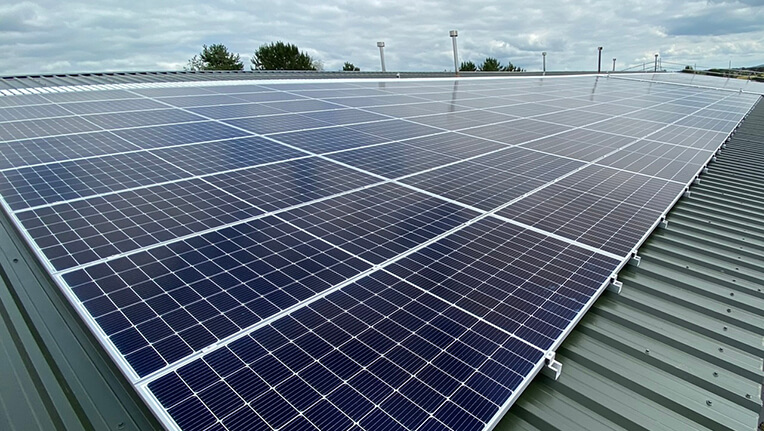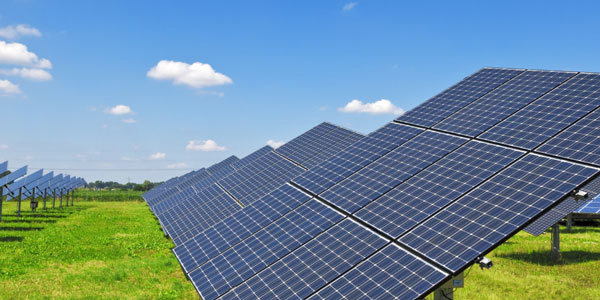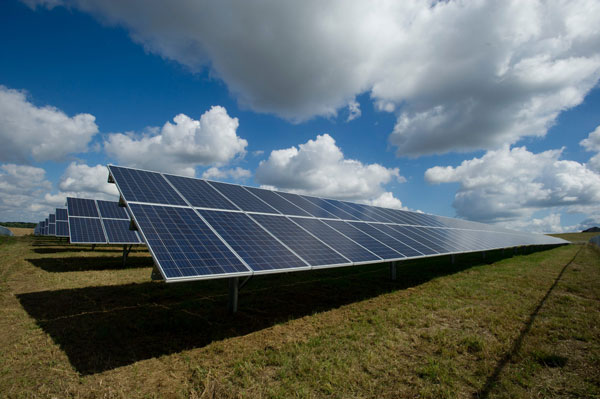Choosing Robust Systems for Harsh Weather
High-wind installations: Solar installations in remote areas are subject to extreme winds. It is important to consider the systems that can ride these challenges to ensure reliability and durability.
Types of Solar Panels Suitable for High Winds and Snow Loads
There are different solar panel manufacturers, which mean there are numerous styles and quality of solar panels. Panels that are wind-resistant, able to withstand winds up to 2400 Pa, are ideal for high-wind scenarios. 5400 Pa (for heavy snow loads) - see real-world applications in Alaska where winter weather and snowfall are extreme
Optimizing Panel Placement And Tilt For Maximum Energy Output
Solar panel orientation and tilt has a huge effect on power production. In the Scottish Highlands, panels are sometimes installed to face the low winter sun, while the angle is still adjusted from 35° to 40°. Compared to fixed-tilt systems, bifacial technology offers up to 20% in boosted operational efficiency.
Using Strong Mounts to Counteract Environmental Stressors
High-quality mounting systems can significantly increase the longevity of photovoltaic installations. And in the desert of Nevada, solar farms install even deeper-ground mounts that are specially designed to prevent erosion and shifting sands. They are designed to be easy to maintain since regular maintenance can be difficult to accomplish in such remote areas.
Continuous Power Supply for Redundancy
Power should be 24/7 always on, so this must be supported, especially when these are deployed generally in disaster areas that may face natural disruptions. One such project is of course the solar array on the island of Ta'u that is relatively small-scale but intriguing nonetheless. It has multiple forms of energy storage and can operate for long periods of time even in clouded conditions, with more than a 75 percent increase in availability.
Predicting Breakdowns with Smart Monitoring Systems
EfficiencySolar installations will just be efficient with the help smart monitoring technologies. Real-time data is used in these systems to anticipate when a failure may occur and provides indicators for preventative maintenance. A solar farm in Chile now uses predictive analytics to determine when to clean panels, which has resulted in a 30% reduction in maintenance costs and a 15% increase in output.
Logistics and Planning for Remote Installations
Logistics and Planning Is the Key: In far-flung areas, where the reach of resources is difficult, one has to ensure the logistic processes are effective and practical for on-time delivery of the solar system.
Formulating A Complete Approach For Site Assessment
Solar projects require before highly detailed site assessment. This includes assessing the levels of solar irradiance, the weather in the region and the terrain. In a project in the Sahara Desert, sand dune movement patterns would be mapped to stop the panels from being buried. They make sure the location of the installation is suitable for solar-generation purposes in the long-run.
Customized Supply Chain and Material Transport Plan
Transporting material to remote sites needs planning down to the last detail. The use of local materials wherever possible can save on costs and help to stimulate the local economy. In a project on the remote island location of Fiji, solar panels and other key components were shipped in from the mainland, while mounting structures were sourced on the island, saving a total of 25% in transportation costs.
Developing a Comprehensive Training and Management System for the Work Force
Engaging and training local workers leads to ease of project deployment and guarantees provision of continued maintenance support. The training programs have been conducted by those companies in an effort to tap into the remote Australian outback installation, creating long-term jobs and sustainable projects in the process.
Established On-Site Project Management and Communication Solutions
Tools needed for remote solar project management: The post-lockdown survival kit. Real-time monitoring and controlling satellites communication and Internet-of-Things (IoT) network devices. In Patagonia, where cell service is often out, satellite phones and GPS tracking of kit have saved the day.
Tailoring installation practices to the local community
It is important to adapt the installation techniques to respond to local conditions. Solar installations in the rocky terrains of the Andes utilize custom adjustable ground mounts that conform to the uneven and rugged surface thus aiding in greater stability and array life in the high-wind region.

Integrating Hybrid Power Systems with Solar PV
Hybrid power systems of solar PV along with other combinations of power sources, combining solar with wind or diesel provide reliability and round-the-clock power in far off places where solar alone could not work.
Local Energy Requirements
When evaluating the most appropriate hybrid system for a given site, so as to supply power to meet the local energy demand and assess in which environmental and topography situations the most viable outcomes can be met at the right cost, a comprehensive analysis is needed. In the Aleutian Islands, which can have minimal daylight during the winter, solar installations are paired with wind turbines, resulting in a 40% reduction in diesel used each year.
Structuring Ideal Hybrid System Configuration
The process of solving for the best configuration involves figuring out the ideal balance of solar power to non-solar power. One of the most optimal systems for north Canada is 30:70 solar to diesel Hybrid System for 48% and 52%, respectively depending on sunlight (determined through simulation of a years solar radiation) and diesel price.
Leveraging Cutting Edge Battery Storage Solutions
Advanced battery storage helps to balance the intermittent power supply in hybrid systems. Systems in remote Chilean villages operate with lithium-ion batteries that can safeguard surplus sunlight- and wind-sourced electricity for use when solar irradiance or wind strength is down.
Leveraging Performance-Boosting Smart Management Systems
To control and deplete the output of power from different sources requires smart management systems. IoT-based controllers ensure that in rural Tanzania a hybrid system switches between solar, battery storage, and diesel generator as is best for power needs and weather at any given time, which can substantially reduce waste.
Bringing local communities under training and empowering them to manage the lake on sustainable basis
Training local community members to operate hybrid systems will ensure continuity and create a vested interest in operations. In Namibia, training programs teach system maintenance, troubleshooting, and local use techniques to ensure the residents are properly trained to maintain and utilize these energy solutions.
Best Practices for Long-Distance Monitoring
Performance monitoring over long distances is critical to the operation and maintenance of solar PV systems in remote locations, where presence may be restricted and Solar PV systems are installed in geographically challenging terrain.
Building Reliable Remote Communication Tools
Selecting the same communication technology is not enough. Enable global connectivity in secure, long-life satellite and cellular IoT technologies for unconnected regions The result is much more reliable satellite data transmission in harsh environments, the sprawling Gobi Desert, where satellite and solar power provide a 15% improvement in uptime over traditional methods.
Using Advanced Sensors and Automated Systems
Efficient solar system monitoring using high-resolution sensors The data is based on solar irradiance, panel temperature, and energy produced. Solar installations in the Amazon rainforest warns against unusual conditions, such as heating up or a decrease in output, which in time can be intervened.
Advantages of Predictive Maintenance using Cloud-Based Data Analysis
Machine learning based analyses of data gathered from solar installations also warn of possible failure conditions, ideally before they occur. These advances, combined with predictive analytics, can reduce the number of maintenance trips by as much as 50% in some of the most rural locales of Africa, saving money and improving system reliability in the process.
Teaching Your Distributed Teams to Analyze Data and Diagnose Problems
Establishing local capacity to interpret data and make a basic trouble-shooting can be a game-changer to keep solar installations running across the country. Local workshops and online training sessions in the mountains of Nepal train local technicians to handle common problems, increasing system uptime by 30%.
How to make an Integrated Monitoring Facility for Several Installations
The central monitoring facility can easily monitor a cluster of solar installations across different remote locations. The plant runs on real-time data for improved performance and preventative maintenance scheduling. In Australia, a single hub oversees 20+ installations throughout the continent, which utilizes AI algorithms to optimize energy distribution and maintenance logistics.
Training Local Teams for Maintenance
Maintaining and operating solar photovoltaic systems in remote areas requires not just any old solar training, but a way to impart the necessary knowledge to the local teams who will have to keep them operational.
Creating Bespoke Learning Modules According To The Need Of A Particular Region
The initial stage for the successful learning is to create modules for specific areas where the problems are and where the environmental factors are. At the Himalaya, the focus of the training is on how to function in the snow and low temperatures and how to battle against solar panel getting snow clogged and the battery deteriorating due to the cold.temperatures. The training sessions have helped improve the efficiency of local maintenance operations by 40%.
Using Simulation Tools for Practice
This feature provides the ability to understand the practical concepts as well as hands-on practice without damaging physical things. In the Brazilian Amazon the local teams in the backwaters where they operate have learned how to do complicated maintenance jobs using VR (Virtual Reality) simulations, which has reduced on-site errors by 30%.
A Train-the-Trainer Model
This is cascaded down through train-the-trainer principles across local communities in a sustainable manner. Numerous local team members are trained in Sub-Saharan Africa to be trainers who will then teach others of the community which will build the technical competence of the whole community.
Mobile + Digital Learning Platform Integration
These kinds of guided maintenance can be used as a regular curriculum on mobile learning platforms. In remote regions of Mongolia, techs receive continuous training via mobile apps which alert them to advancements in solar technology and the latest troubleshooting methods, thereby reducing system downtime.
Solar Technology Suppliers to Sign Collaboration
Continued support and training upgrades are available through relationships with solar technology vendors. We have relationships with a number fo global vendors, so ouor local teams have the most up to date knowledge abd tools. Out in the Nevada desert, those collaborations mean that community teams have been able to do more advanced maintenance work on their own, making the installations last longer.

Utilizing Portable and Flexible Solar Panels
The Portable & Foldable Solar Panels is a revolution in solar installations in the city of Santa Rosa, offering the flexibility and convenience of deployment in remote areas which traditional panels have not been able to match.
Benefits of Flexible Solar Technology
For remote access, flexible solar panels are best to use, which is made up of materials as thin-film photovoltaics. Curved roofs or temporary structures could be ideal surfaces to install these types of panels, as they would not traditionally be an area set up to accommodate standard panels. These panels are used on old stone cottages in the rolling hills of Scotland, limiting aesthetic impact and allowing the panels to act as a symbol of integrating renewable energy into existing structures. They are much lighter, up to 70% less than traditional panels which simplifies the installation and transportation.
Maximum Impact Deployment Strategies
The deployment of flexible panels must be correctly positioned to receive most of the sunlight. On the other side of the world, in the Australian Outback, a team of researchers continues to move around smaller, portable panels to the optimal orientation to take in the full sun, with a 25 percent better capture of sunlight than fixed arrays.
Interacting with other Electricity Systems
They can be used to bulk up existing power systems in peak demand times and the fact they are mobile and flexible is an added bonus. These trailers supply additional energy during the summer tourist season, allowing the panels to integrate well with diesel generators in isolated regions in Canada and reduce fuel consumption by 40%.
Train and Transport Native Teams
Local teams trained on installation and maintenance of flexible solar panels make sure they can handle such technology. On Indonesia's far-flung islands, homegrown technicians who learn to set up and maintain the flexible panels are now taking 50% fewer maintenance calls as a result of newly acquired knowledge.
Reliability and upkeep in the long-term
Though flexible, these panels are constructed to endure both rough weather conditions and be walked on. Flexible Panels serving in deserts of Namibia have survived sand abrasion and extreme UV exposure maintaining efficiencies over 90% for many years.





